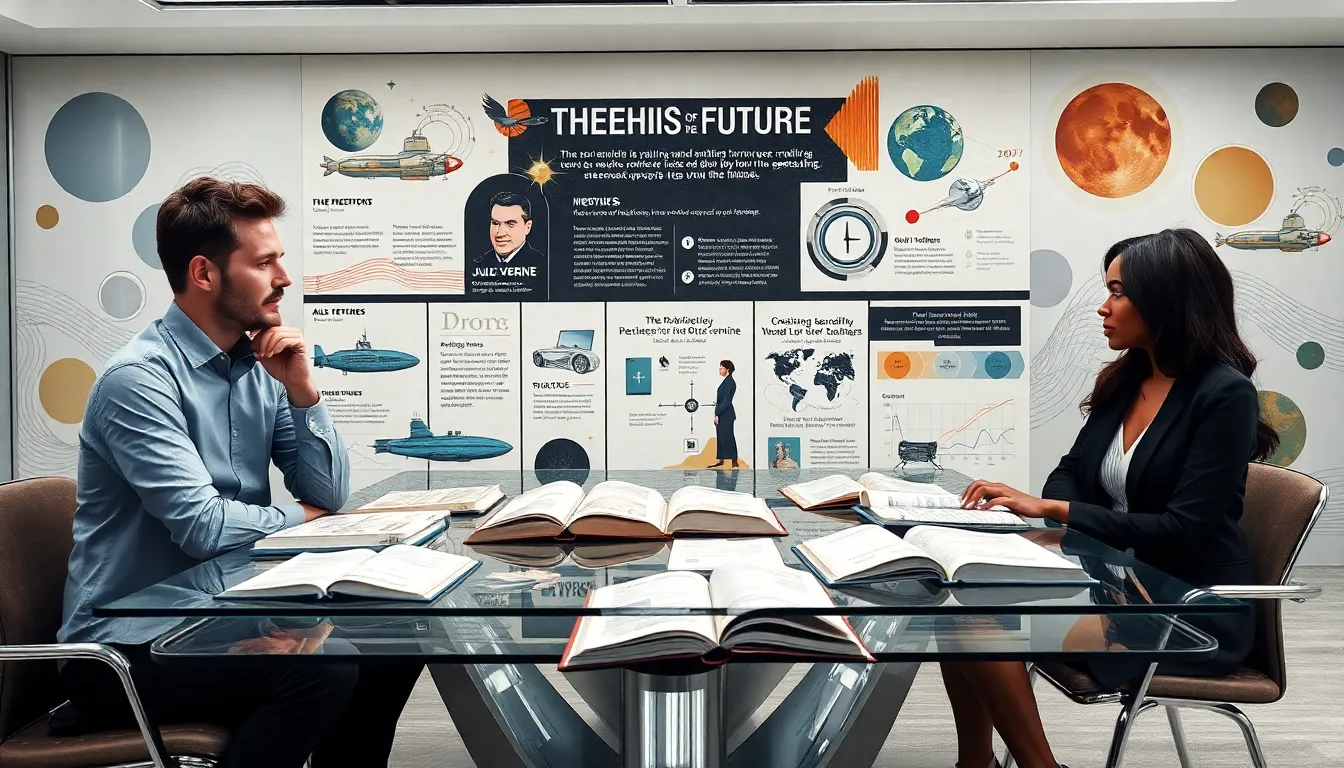Table of Contents
ToggleHave you ever wondered how people from centuries ago envisioned today? Imagine folks in the 1950s, sipping coffee in their kitchens, confidently predicting we’d all have flying cars by now, spoiler alert: we’re still stuck in traffic. The art of predicting the future has always been a fascinating dance between creativity and scientific reasoning. This article dives into the quirky, sometimes outrageous predictions made throughout history, shedding light on their accuracy, their culture, and what we can learn from them today. Buckle up as we journey through time and explore how predictions have shaped our world.
The Art Of Prediction: A Historical Overview

Prediction has roots as old as civilization itself. From the ancient Greeks, who consulted oracles, to the Renaissance thinkers predicting celestial events based on star alignments, humans have sought answers about the future.
Around the 18th and 19th centuries, the Industrial Revolution ignited a surge of expectations about technological progress. The sheer pace of innovation led visionaries like Jules Verne, who penned predictions of submarines and space travel. They managed to blend imagination with emerging scientific knowledge, laying a foundation for speculative thought.
As we transitioned into the 20th century, predictions morphed into a cultural staple. Each decade carried its unique flavor of expectations, reflecting societal concerns. The Roaring Twenties prophesied a techno-utopia, a time when fashion, music, and science were interwoven, leading to soaring optimism about the future. But as we all know, life seldom follows a script.
Notable Predictions That Shaped Public Imagination
Among the countless predictions made over the years, a few stand out for their boldness and the way they captured the public’s imagination. For instance, in 1964, the New York World’s Fair offered visitors a glimpse into the “World of Tomorrow.” You could see yourself zipping to work in a personal helicopter. Fast forward to today, and we’re still debating the viability of drone taxis.
Another unforgettable prediction came from famed inventor Thomas Edison. He once proclaimed that we would soon have a device allowing people to communicate via wireless, essentially foreshadowing the smartphone. While it took a while, he wasn’t too far off.
But, not all predictions were rooted in scientific foresight. Remember the infamous Y2K bug? The fears surrounding this glitch in computer systems painted a dystopian picture of chaos at the turn of the millennium. Thankfully, the world passed the date without any cataclysmic events, leading to a collective sigh of relief. Such instances show the fine line between true foresight and mere speculation.
Scientific Predictions vs. Cultural Predictions
When examining predictions, a crucial distinction arises: scientific predictions based on data versus cultural predictions, which often stem from societal beliefs and collective consciousness.
Scientific predictions typically arise from empirical observations, think climate models forecasting temperature increases. These predictions rely on established principles and verifiable data and hence tend to hold more weight. For instance, in the 1970s, scientists predicted the rapid decline of the ozone layer due to CFCs, leading to international agreements like the Montreal Protocol. This foresight demonstrated the effective coupling of science and action.
In contrast, cultural predictions often echo the zeitgeist of their time. For example, 1980s pop culture was rife with utopian themes of technology solving all of humanity’s problems. Films like “Back to the Future” and “Blade Runner” enchanted audiences with over-the-top depictions of a future shaped by robots and flying cars. These cultural narratives can drive public expectations, influencing how society perceives technology.
How Technology Influenced Predictions Through The Ages
Surveying history reveals a fascinating interplay between technological advancements and predictions. The invention of the printing press in the 15th century revolutionized access to knowledge, enabling more people to make informed guesses about the future.
In the 20th century, television and radio expanded the reach of predictions, allowing famous futurists like Buckminster Fuller and Alvin Toffler to present their ideas to mass audiences. Fuller, for instance, envisioned geodesic domes and global housing, concepts that continue to influence sustainable design today.
Also, technology didn’t just enable predictions: it also changed how predictions were made. The advent of computers and big data analytics allowed for more sophisticated modeling techniques, improving the accuracy of forecasts in everything from weather patterns to stock market trends. This technological leap transformed predictions from educated guesses into analyses grounded in data.
Lessons Learned From Past Predictions
The history of predictions is peppered with lessons worth noting. For starters, overconfidence in technological advancements can lead to missed opportunities. Take the prediction of flying cars in the 1960s: the absence of infrastructure and regulations meant this idea languished in the realm of fantasy.
Conversely, there’s value in cautious optimism. The predictions about renewable energy sources from the 1970s may have seemed overly ambitious at the time, yet they have paved the way for today’s reliance on solar and wind power. As the world moves toward combating climate change, these early expectations resurface with renewed significance.
Also, the social context of predictions must be considered. Many cultural forecasts failed to take into account the variability of human behavior and societal acceptance of technology. Predictions should emphasize adaptability, not just technological capability, as we navigate the uncertain future.
The Future Of Predictions: Trends And Tools
Looking forward, the landscape of predictions is evolving even further. Machine learning and artificial intelligence stand at the forefront, revolutionizing how data is analyzed. These tools allow for predictive modeling beyond human capabilities, refining accuracy across numerous fields.
Also, the rise of crowdfunding and social media offers new avenues for gauging public sentiment about the future. Trends emerge as people share ideas collectively, helping shape cultural narratives that influence technological development.
Ethical considerations about predictions are also essential. As predictive technologies advance, they will challenge notions of governance, privacy, and societal impact. Balancing optimism with caution will be critical in utilizing technology’s potential without compromising human values.




